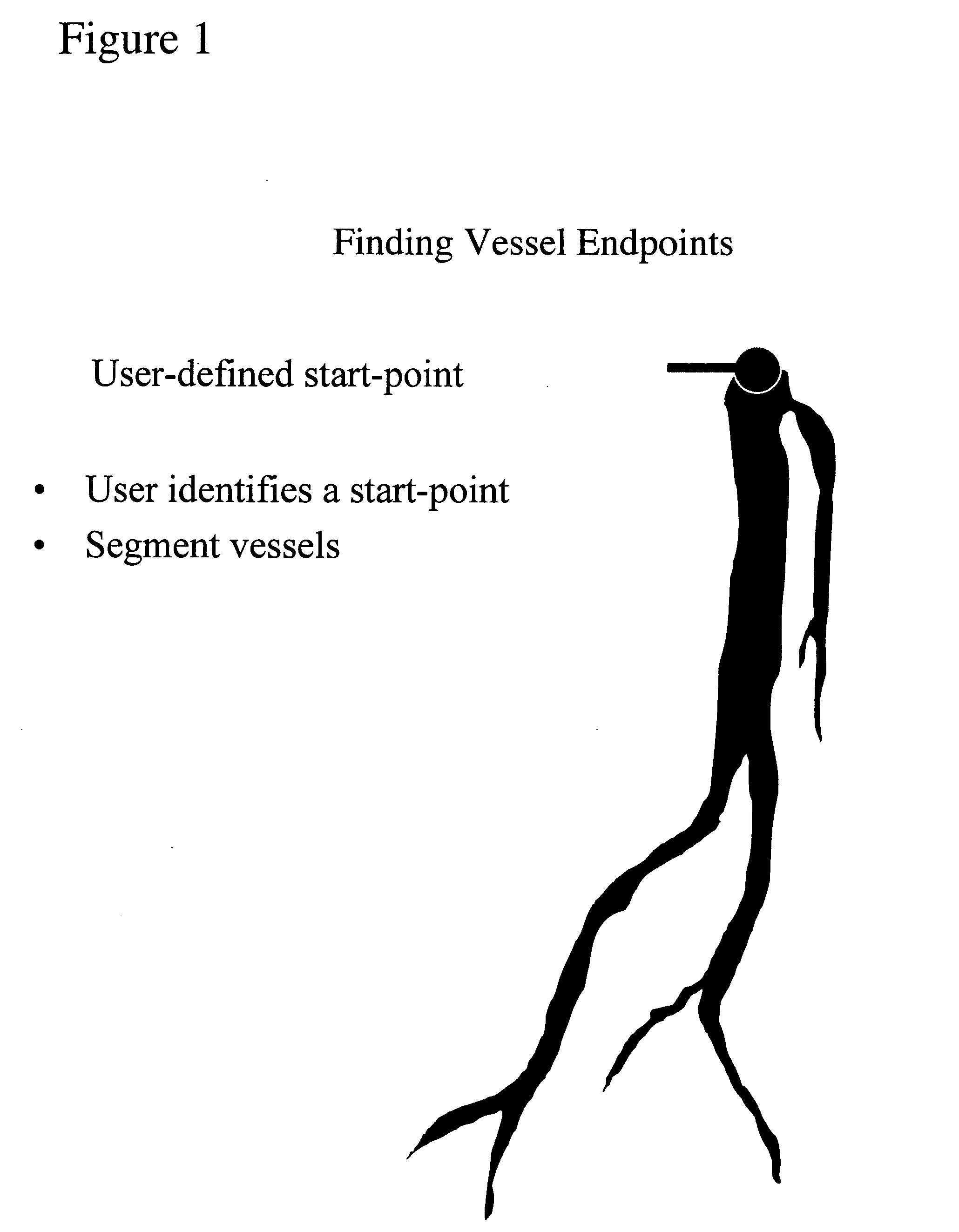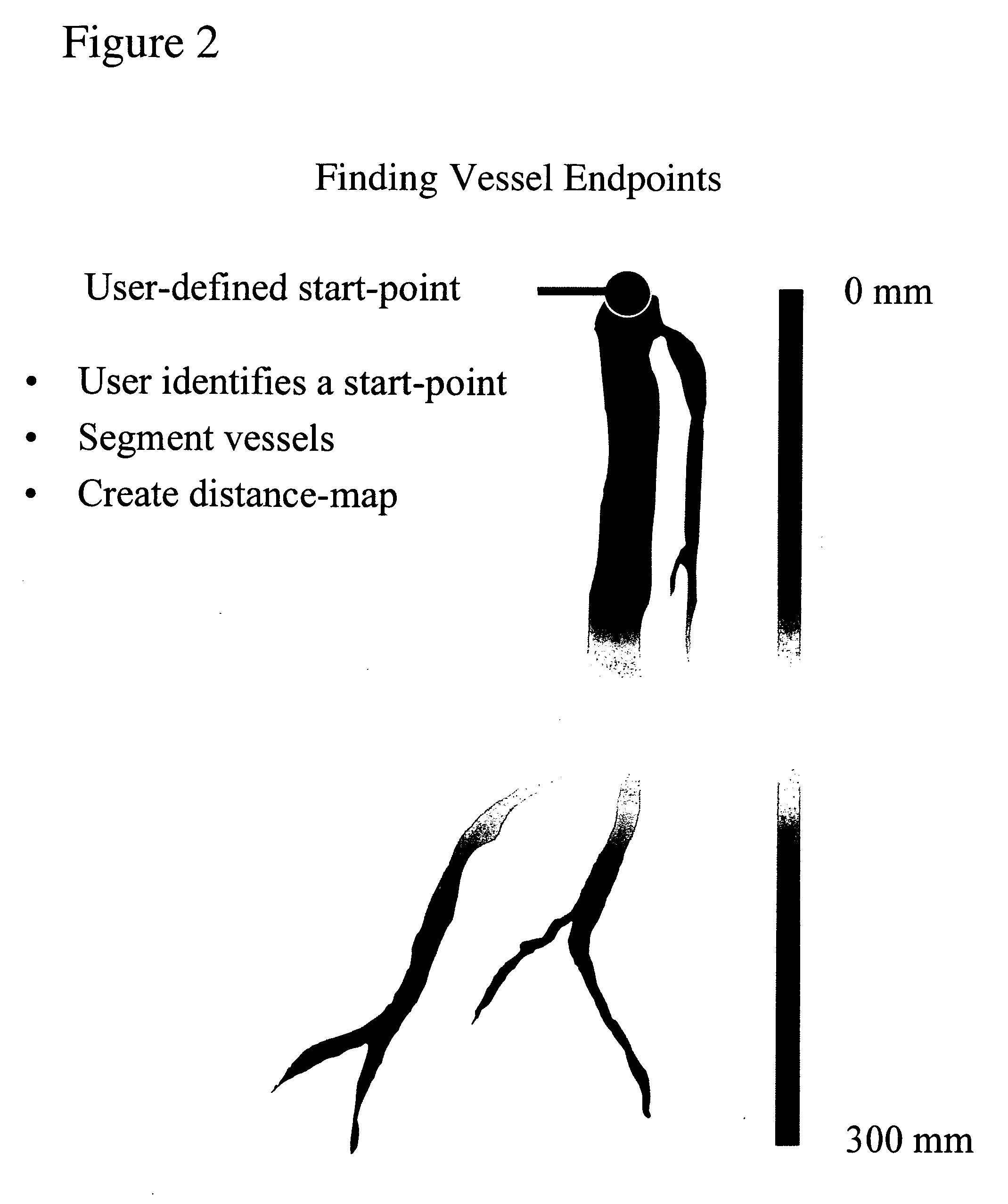Method to identify arterial and venous vessels
a technology of arterial and venous vessels and identifying methods, applied in the field of medical imaging, can solve the problem that the art lacks methods to ease the task of identifying the anatomical labels of vessels
- Summary
- Abstract
- Description
- Claims
- Application Information
AI Technical Summary
Problems solved by technology
Method used
Image
Examples
Embodiment Construction
[0016] We have developed a method for automatically identifying the location and course of the vascular tree, given only one user-defined point in the root or parent vessel for the vascular tree. Our method also then uses the relatively invariant parameters (vessel cross sectional profile and vessel cross sectional area profile discontinuities, branching patterns, branch directions and laterality) of the human vascular tree to apply appropriate anatomic labels to the branches of the vascular tree.
[0017] The methods uses one (manually or automically) entered point in a vessel, e.g. the aorta, and patient orientation from the image headers to obtain position information for anatomic labeling. The method then creates a segmentation of the vessel tree. This is done by using an adaptive threshold and the startpoint as the seed point. The segmentation thus obtained represents the vascular tree in its entirety. A standard distancemap is then calculated. This distancemap enumerates the dis...
PUM
 Login to View More
Login to View More Abstract
Description
Claims
Application Information
 Login to View More
Login to View More - R&D
- Intellectual Property
- Life Sciences
- Materials
- Tech Scout
- Unparalleled Data Quality
- Higher Quality Content
- 60% Fewer Hallucinations
Browse by: Latest US Patents, China's latest patents, Technical Efficacy Thesaurus, Application Domain, Technology Topic, Popular Technical Reports.
© 2025 PatSnap. All rights reserved.Legal|Privacy policy|Modern Slavery Act Transparency Statement|Sitemap|About US| Contact US: help@patsnap.com



